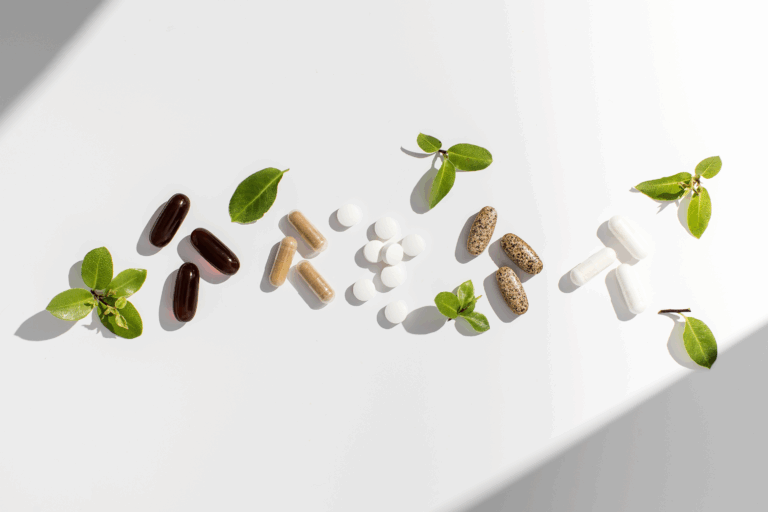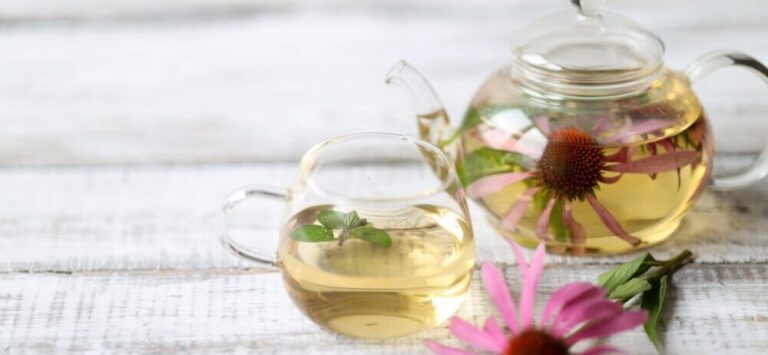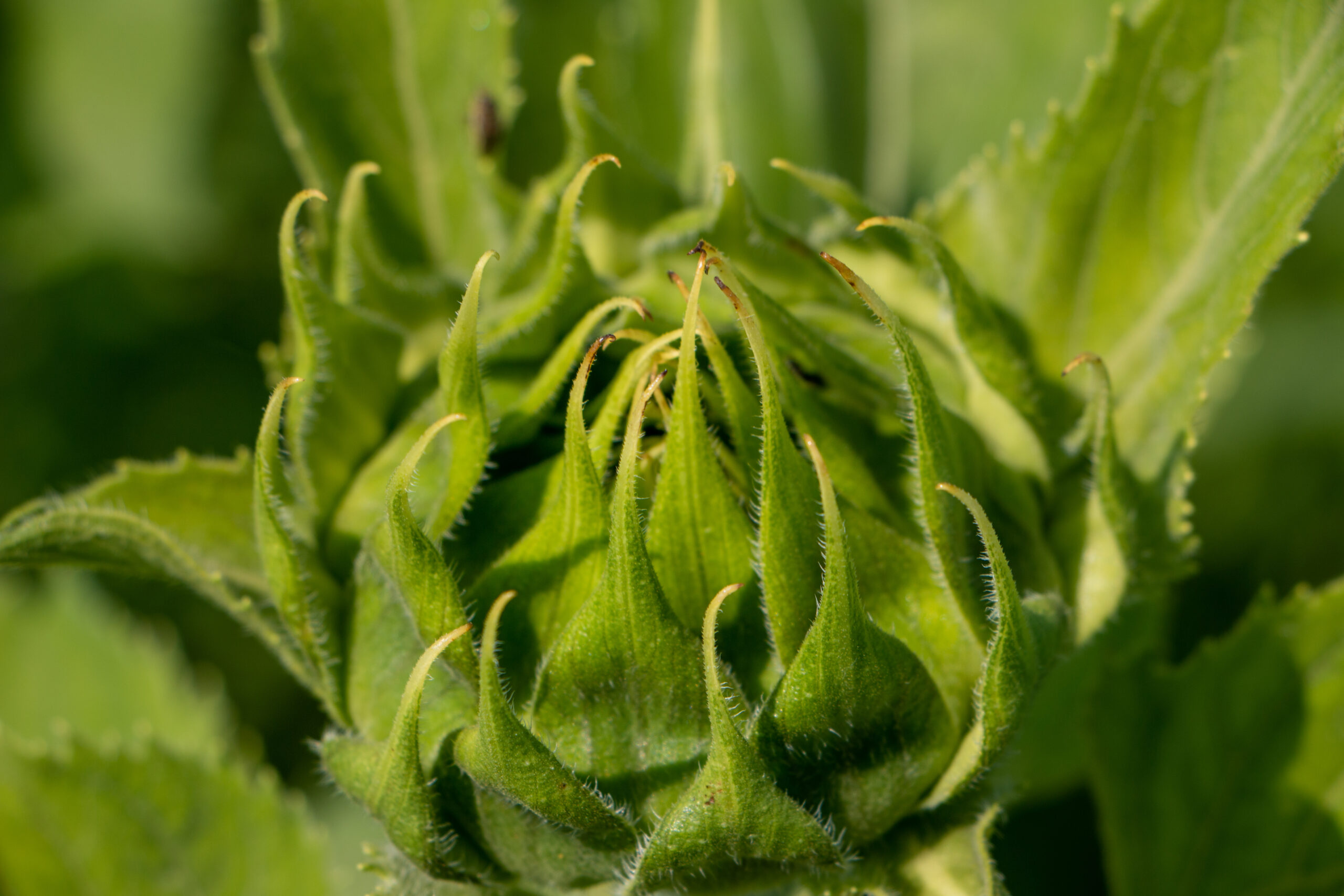Herbal Constituents and Relevant Biochemistry
Herbal Constituents and Relevant Biochemistry
For over three billion years, plants have evolved in response to the needs and challenges required of their environment. Through these constant biochemical pursuits, humankind has also greatly benefited.1 Herbal constituents are the active ingredients of plants. They are plant metabolites (phytochemicals) which when consumed, have a definable physiological and potentially medicinal effect on the body.
Plant cells produce two types of metabolites, both of which are derived from carbohydrates synthesized through the process of photosynthesis. Primary plant metabolites, which are involved directly in a plant’s growth and metabolism, and secondary plant metabolites, which are most often considered to be responsible for a plant’s medicinal effects.2 When a plant produces significant amounts of secondary metabolites, it is then generally categorized as a medicinal herb.
Herbal constituents are usually classified by their chemical structure or biosynthetic pathway, and within each grouping, various subgroupings or classifications can exist. Some are ubiquitous (e.g., flavonoids), while others will be unique to a single herb (e.g., curcumin) or only a few herbs of which herbalists are aware (e.g., alkylamides). Herbal constituents will also vary in their ability to be extracted into different solvents (e.g., fat, water, or ethanol) and distribution throughout body tissues (e.g., ability to cross the blood brain barrier).
| Major Classes of Herbal Constituents |
| Alkaloids: synthesized from amino acids and all contain nitrogen Polyphenols: have multiple aromatic rings and often occur as glycosides Flavonoids Tannins Anthraquinones Coumarins Salicylates Lignans Terpenoids: synthesized from isoprene/mevalonate Saponins (steroidal/furanosterol and triterpene) Volatiles oils Resins Mono-, di-, and sesquiterpenes Carbohydrates: mucilage and other polysaccharides Note: Many of the above constituents are found combined with a sugar moiety and are thus considered glycosides within plants. |
Standardization of Herbal Constituents
Pharmacognosy is the field of study focused on the identification and extraction of singular phytochemicals for the development of pharmaceuticals, and much modern research conducted with plants applies a similarly reductionistic approach. Although this can be helpful to further the understanding of a plant’s mechanism of action, it is important to recognize that studying individual plant constituents in isolation cannot be considered a complete representation of the activity of the plant as a whole. The concept of plant synergy is crucial to understanding the complexity of how plant medicines work.
Thousands of plant constituents have been discovered, and though our scientific understanding has grown immensely within the last few decades, many of their individual and combined effects are yet to be uncovered. Nonetheless, having a sound knowledge of some key plant constituents is particularly helpful when it comes to understanding a plant’s pharmacological activity. This is essential for developing quality assurance methods, extraction procedures, and ascertaining potential toxicity concerns and drug interactions.
Herbal products often include individual constituents to “standardize” or provide a marker of either quantifiable activity or consistency of active ingredients from batch to batch. It is ideal to achieve a certain accepted amount of an active phytochemical being present when based on the clinical data. It is equally useful to ensure that the “whole herb” is included alongside it and that a full spectrum of the plant’s other naturally occurring compounds are present in the product as well.
Withanolides
Withanolides belong to a phytochemical class of constituents called steroidal saponins which are found mainly within the root of Ashwagandha (Withania somnifera) and are often regarded as key markers of the plant’s quality and therapeutic activity.
Approximately 900 withanolides have been discovered and though their chemical structure will vary, some bear a similar resemblance to the body’s endogenous hormones and can have modulating effects upon cortisol and reproductive functions.3 It is likely that Ashwagandha’s adaptogenic effects may result from the complex of withanolides, which have glucocorticoid-like effects – helping with the adaptive stress response.4
Many withanolides have also demonstrated significant immunomodulatory effects, with both immunostimulatory and inhibitory actions being attributed to different types. Withaferin A is perhaps the most most studied withanolide, and it has been shown to target multiple cellular signaling pathways simultaneously. In models of stress, it is able to shift toward a greater Th-1 immune response, activate cytotoxic natural killer (NK) cells, and recover depleted T-cells.5
Though the precise mechanism of action has yet to be fully elucidated, in vitro studies using methanolic extract of the root have demonstrated GABA-mimetic activity of withanolides. These studies indicate a possible rationale for its role in the treatment of disorders associated with GABAergic signaling dysfunction such as general anxiety disorders, sleep disturbances, and muscle spasms.6
Withanolides appear to have rapid absorption after oral administration in animal models. Extracts of Ashwagandha containing 30 mg of withanolides and used daily have been clinically demonstrated to:7
- Benefit chronic stress anxiety and insomnia8-13
- Improve sperm parameters and sex hormone levels in infertile men14,15
- Improve cognitive function in healthy volunteers and patients with mild cognitive impairment16
- Benefit muscle strength and recovery17
- Potentially improve thyroid function in subclinical hypothyroidism18
Alkylamides
Alkylamides are a class of stable, fatty acid-like molecules produced by a number of medicinal plants often known for their pungent taste and tingling sensation within the mouth.19 They are particularly concentrated within the roots of Echinacea angustifolia (Narrow leaf purple coneflower) and are considered to be the most clinically relevant active constituents and major markers of quality in regards to Echinacea species.20

Plant alkylamides are structurally diverse with a wide range of biological effects; however, they are usually lipophilic and will have various pharmacological activities including immunomodulatory, antimicrobial, antiviral, and anti-inflammatory activity.21 The roots of E. angustifolia appear to be higher in alkylamides overall and particularly in the 2-ene type structure versus other species such as E. purpurea (Eastern purple coneflower). Synergy between combining species of Echinacea has been demonstrated, with the 2-ene structure in E. angustifolia showing a protective effect against the degradation of 2,4, diene alkylamides via the P450 enzyme system.21 Therefore combining these species together may result in greater alkylamide bioavailability and activity within the body.
Alkylamides in Echinacea species have also been observed to resemble the structure of the endogenous cannabinoid anandamide (AEA) and interact at CB2 receptors, inhibiting AEA reuptake in vitro, and having anxiolytic effects in humans and animal models.22,23
The immunomodulatory activities of Echinacea spp. are in large part attributed to their alkylamides, and their ability to exert cannabimimetic responses, modulate innate and adaptive immunity, and contribute towards potent anti-inflammatory effects.24-26 Further interactions with the endocannabinoid system include inhibiting fatty acid amide hydrolase (FAAH) which may be linked to other central nervous system activities.27 Alkylamides from Echinacea have also shown potential in alleviating symptoms of atopic eczema and restoring the epidermal lipid barrier when applied to the skin, as the endocannabinoid system is known to regulate various aspects of cutaneous barrier and immune functions.25
Kavalactones
Kavalactones are lipophilic compounds found in the resinous portion of Kava roots (Piper methysticum), and they are considered responsible for its main pharmacological effects and numbing sensation in the mouth. Over 29 different kavalactones have been identified; however, some of the most researched include kavain, methysticin, dihydromethysticin, and yangonin.28 Kava extracts are often standardized to their kavalactone content and dosed between 100 to 200 mg kavalactones per day.
The content and profile of kavalactones appear to vary with the age and variety of the plant, geographical origin, and growing conditions, and may contribute to its medicinal properties, solubility, and potential for adverse effects.29,30 “Noble” cultivars of Kava appear related with respect to their kavalactone composition, having relatively higher levels of kavain and synergistically acting water-soluble constituents – compared to more fat-soluble constituents with potentially harmful effects such as dihydromethysticin.31

Kavalactones appear to be responsible for Kava’s anxiolytic properties via modulation of GABA channels, with kavain and dihydrokavain possessing the most significant GABAergic activity.32,33 The lipophilic nature of kavalactones allows for them to access the brain and remain within lipid membranes, potentially effecting a variety of cell surface receptors and increasing the number of GABA binding sites rather than changing an affinity to bind GABA directly.32,34 Numerous studies suggest a range of other possible mechanisms of kavalactones related to Kava’s anxiolytic, analgesic, and anesthetic effects, including:
- Blockage of voltage-gated sodium ion channels35,36
- Binding of brain opioid receptors at high concentrations37
- Reduced excitatory neurotransmitter release due to blockade of calcium ion channels38
- Affinity for CB₁ receptors within the endocannabinoid system39
- Enhanced ligand binding to gamma-aminobutyric acid (GABA)(A) receptors and suppression of the synthesis of thromboxane A(2), which antagonizes GABA(A) receptor function34,40
- Reduced neuronal reuptake of noradrenaline (norepinephrine) and dopamine41
Curcumin
Curcumin is a bright yellow flavonoid isolated from the rhizomes of turmeric (Curcuma longa).
It is considered the most abundant and potent antioxidant of a group of compounds found in the turmeric rhizome called curcuminoids, which includes related molecules demethoxycurcumin and bisdemethoxycurcumin.
Curcumin has a lipophilic nature (it is nearly insoluble in water) and is generally considered to have poor absorption and low systemic bioavailability, as evidenced by low serum levels after oral doses, limited tissue distribution, and a rapid liver metabolism.42 Many methods to improve curcumin bioavailability have been utilized such as combining with fat or other adjuvants (e.g., Black pepper), using curcumin analogues, and formulating alongside galactomannosides, phospholipid complexes, and/or nanoparticles.
Curcumin is one of the most extensively studied plant constituents, whose main properties include antioxidant, anti-inflammatory, and anti-cancer effects.43 Its mechanism of action has been evaluated in thousands of studies at equivalents of approximately 200 to 300 mg of curcuminoids demonstrating effects upon diverse molecular targets including altered gene expression and signaling pathways such as:44,45
- Transcription factors, such as nuclear factor-kB (NF-kB)
- Signal transducer and activator of transcription (STAT) proteins
- Nuclear factor erythroid 2-related factor 2 (Nrf2)
- Growth factors (such as vascular endothelial cell growth factor)
- Inflammatory cytokines such as tumour necrosis factor (TNF)-alpha, interleukin 1 (IL-1), and IL-6
- Protein kinases, such as mitogen-activated protein kinases (MAPKs) and Akt
- Cyclooxygenase-2 (COX-2), hemeoxygenase-1 (HO-1), and NAD(P)H:quinone oxidoreductase 1 (NQO1).
Constituent Table
| Constituent Class | Secondary Metabolite | Herbal Examples | |
| Alkaloids | Berberine | Goldenseal (Hydrastis canadensis)
Oregon Grape (Berberis spp.) Phellodendron amurense |
|
| Polyphenolics | Flavonoids | Proanthocyanins
(Condensed tannins) |
Grapeseed (Vitis vinifera)
Green Tea (Camellia sinensis) |
| Vitexin-2-rhamnoside | Hawthorne (Cratageus spp.) | ||
| Silybin | Milk Thistle (Silybum marianum) | ||
| Flavonylglycosides | Ginkgo (Ginkgo biloba) | ||
| Rosavins (e.g., salidroside) | Rhodiola (Rhodiola rosea) | ||
| Curcumin | Turmeric (Curcuma longa) | ||
| Eleutheroside E | Eleuthero (Eleutherococcus senticosus) | ||
| Terpenoids | Saponins | Withanolides | Ashwagandha (Withania somnifera) |
| Ginsenosides | Asian/Korean Ginseng (Panax ginseng) | ||
| Glycyrrhizin | Licorice (Glycyrrhiza glabra) | ||
| Gymnemic acids | Gymnema (Gymnema sylvestre) | ||
| Aescin | Horse chestnut (Aesculus hippocastanum) | ||
| Bacosides | Bacopa (Bacopa monnieri) | ||
| Protodioscin
Dioscin |
Tribulus (Tribulus terrestris)
Wild Yam (Dioscorea villosa) |
||
| Actein | Black Cohosh (Actea racemose) | ||
| Volatile Oils | Various | Rosemary, Holy Basil, Oregano, Sage | |
| Resins | Kavalactones | Kava (Piper methystium) | |
| Mono, Di, and Sesquiterpenes | Ginkgolide, bilobides | Ginkgo (Gingko biloba) | |
| Labdane Diterpene | Forskolin | Coleus (Coleus forskohlii) | |
| Fatty Acids | Alkylamides | Echinacea (Echinacea angustifolia and E. purpurea) | |
| Various | Saw Palmetto (Serenoa repens) | ||
| Carbohydrates | Mucilage | Marshmallow (Althea officinalis) | |
| Minerals | Iodine | Kelp/Bladderwrack (Fucus vesiculosis) | |
- Holland, H. D. (1997). Evidence for life on Earth more than 3850 million years ago. Science, 275(5296), 38-39.
- Ramawat, K. G., Dass, S., & Mathur, M. (2009). The chemical diversity of bioactive molecules and therapeutic potential of medicinal plants. Herbal drugs: ethnomedicine to modern medicine, 7-32.
- White, P. Et al. (2016). Natural withanolides in the treatment of chronic diseases. In Anti-inflammatory Nutraceuticals and Chronic Diseases (pp. 329-373). Springer, Cham.
- Panossian, A. G. et al. (2020). Evolution of the adaptogenic concept from traditional use to medical systems: Pharmacology of stress‐and aging‐related diseases. Medicinal Research Reviews.
- Ganzera, M., Choudhary, M. I., & Khan, I. A. (2003). Quantitative HPLC analysis of withanolides in Withania somnifera. Fitoterapia, 74(1-2), 68-76.
- Speers, A. B. et al. (2021). Effects of Withania somnifera (Ashwagandha) on Stress and the Stress-Related Neuropsychiatric Disorders Anxiety, Depression, and Insomnia. Current Neuropharmacology, 19(9), 1468.
- Patil, D. et al. (2013). Determination of withaferin A and withanolide A in mice plasma using high-performance liquid chromatography-tandem mass spectrometry: application to pharmacokinetics after oral administration of Withania somnifera aqueous extract. Journal of Pharmaceutical and Biomedical Analysis, 80, 203-212.
- Kelgane, S. B., et al. (2020). Efficacy and tolerability of Ashwagandha root extract in the elderly for improvement of general well-being and sleep: a prospective, randomized, double-blind, placebo-controlled study. Cureus, 12(2).
- Langade, D., et al. (2019). Efficacy and safety of Ashwagandha (Withania somnifera) root extract in insomnia and anxiety: a double-blind, randomized, placebo-controlled study. Cureus, 11(9).
- Salve, J., et al. (2019). Adaptogenic and anxiolytic effects of ashwagandha root extract in healthy adults: a double-blind, randomized, placebo-controlled clinical study. Cureus, 11(12).
- Chandrasekhar, K., et al. (2012). A prospective, randomized double-blind, placebo-controlled study of safety and efficacy of a high-concentration full-spectrum extract of ashwagandha root in reducing stress and anxiety in adults. Indian journal of psychological medicine, 34(3), 255-262.
- Pratte, M. A., et al. (2014). An alternative treatment for anxiety: a systematic review of human trial results reported for the Ayurvedic herb ashwagandha (Withania somnifera). The Journal of Alternative and Complementary Medicine, 20(12), 901-908.
- Fuladi, S., et al. (2021). Assessment of the efficacy of Withania somnifera root extract in patients with generalized anxiety disorder: a randomized double-blind placebo-controlled trial. Current Reviews in Clinical and Experimental Pharmacology Formerly Current Clinical Pharmacology, 16(2), 191-196.
- Ambiye, V. R., et al. (2013). Clinical evaluation of the spermatogenic activity of the root extract of Ashwagandha (Withania somnifera) in oligospermic males: a pilot study. Evidence-Based Complementary and Alternative Medicine, 2013.
- Nasimi Doost Azgomi, R. et al. (2018). Comparative evaluation of the effects of Withania somnifera with pentoxifylline on the sperm parameters in idiopathic male infertility: A triple‐blind randomised clinical trial. Andrologia, 50(7), e13041.
- Choudhary, D., et al. (2017). Efficacy and safety of Ashwagandha (Withania somnifera (L.) Dunal) root extract in improving memory and cognitive functions. Journal of Dietary Supplements, 14(6), 599-612.
- Wankhede, S., et al. (2015). Examining the effect of Withania somnifera supplementation on muscle strength and recovery: a randomized controlled trial. Journal of the International Society of Sports Nutrition, 12(1), 1-11.
- Sharma, A. K., Basu, I., & Singh, S. (2018). Efficacy and safety of ashwagandha root extract in subclinical hypothyroid patients: a double-blind, randomized placebo-controlled trial. The Journal of Alternative and Complementary Medicine, 24(3), 243-248.
- Veryser, L. (2016). Analytical, pharmacokinetic and regulatory characterisation of selected plant N-alkylamides (Doctoral dissertation, Ghent University).
- Elufioye, T. O., Habtemariam, S., & Adejare, A. (2020). Chemistry and pharmacology of alkylamides from natural origin. Revista brasileira de farmacognosia, 30(5), 622-640.
- Matthias, A., et al. (2005). Cytochrome P450 enzyme-mediated degradation of Echinacea alkylamides in human liver microsomes. Chemico-biological interactions, 155(1-2), 62-70.
- Russo, E. B. (2016). Beyond cannabis: Plants and the endocannabinoid system. Trends in pharmacological sciences, 37(7), 594-605.
- Haller, J., Krecsak, L., & Zámbori, J. (2020). Double‐blind placebo controlled trial of the anxiolytic effects of a standardized Echinacea extract. Phytotherapy Research, 34(3), 660-668.
- Meeran, M. N. et al. (2021). Can Echinacea be a potential candidate to target immunity, inflammation, and infection-The trinity of coronavirus disease 2019. Heliyon, 7(2), e05990.
- Oláh, A., et al. (2017). Echinacea purpurea-derived alkylamides exhibit potent anti inflammatory effects and alleviate clinical symptoms of atopic eczema. Journal of dermatological science, 88(1), 67-77.
- Chicca, A. et al. (2009). Synergistic immunomopharmacological effects of N-alkylamides in Echinacea purpurea herbal extracts. International immunopharmacology, 9(7-8), 850-858
- Antonella, B., & Federica, P. (2019). Old strategies and new perspectives in modulating the endocannabinoid system. Current Bioactive Compounds, 15(2), 159-173.
- Wang, Y. et al. (2021). Biological Activity, Hepatotoxicity, and Structure-Activity Relationship of Kavalactones and Flavokavins, the Two Main Bioactive Components in Kava (Piper methysticum). Evidence-Based Complementary and Alternative Medicine, 2021.
- Lasme, P., Davrieux, F., Montet, D., & Lebot, V. (2008). Quantification of kavalactones and determination of kava (Piper methysticum) chemotypes using near-infrared reflectance spectroscopy for quality control in Vanuatu. Journal of agricultural and food chemistry, 56(13), 4976-4981.
- Kuchta, K., Schmidt, M., & Nahrstedt, A. (2015). German kava ban lifted by court: The alleged hepatotoxicity of kava (Piper methysticum) as a case of ill-defined herbal drug identity, lacking quality control, and misguided regulatory politics. Planta medica, 81(18), 1647-1653.
- Teschke, R., Sarris, J., & Lebot, V. (2011). Kava hepatotoxicity solution: A six-point plan for new kava standardization. Phytomedicine, 18(2-3), 96-103.
- Davies, D. et al. Kava pyrones and resin: studies on GABAA, GABAB and benzodiazepine binding sites in rodent brain. Pharmacol Toxicol. 1992 Aug;71(2):120-6.
- Smith, K. et al. Anxiolytic effects of kava extract and kavalactones in the chick social separation-stress paradigm.Psychopharmacology (Berl). 2001 Apr;155(1):86-90.
- Jussofie, A. et al. Kavapyrone enriched extract from Piper methysticum as modulator of the GABA binding site in different regions of rat brain. Psychopharmacology (Berl). 1994 Dec;116(4):469-74.
- Magura, E. et al. Kava extract ingredients, (+)-methysticin and (+/-)-kavain inhibit voltage-operated Na(+)-channels in rat CA1 hippocampal neurons. Neuroscience. 1997 Nov;81(2):345-51.
- Kormann, E. et al. Kavain analogues as potential analgesic agents. Pharmacol Rep. 2012;64(6):1419-26.
- Yuan, C. et al. Kavalactones and dihydrokavain modulate GABAergic activity in a rat gastric-brainstem preparation. Planta Med. 2002 Dec;68(12):1092-6.
- Martin, H. et al. Kavain inhibits murine airway smooth muscle contraction. Planta Med. 2000 Oct;66(7):601-6.
- Ligresti, A. et al. Kavalactones and the endocannabinoid system: the plant-derived yangonin is a novel CB₁ receptor ligand. Pharmacol Res. 2012 Aug;66(2):163-9.
- Singh, Y. et al. Therapeutic potential of kava in the treatment of anxiety disorders. CNS Drugs. 2002;16(11):731-43.
- Baum, S. et al. Effect of kava extract and individual kavapyrones on neurotransmitter levels in the nucleus accumbens of rats. Prog Neuropsychopharmacol Biol Psychiatry. 1998 Oct;22(7):1105-20.
- Kotha, R. R., & Luthria, D. L. (2019). Curcumin: biological, pharmaceutical, nutraceutical, and analytical aspects. Molecules, 24(16), 2930.
- Salehi, B., et al. (2019). The therapeutic potential of curcumin: A review of clinical trials. European Journal of Medicinal Chemistry, 163, 527-545.
- Morgan, M. (2017). Phytotherapists’ Perspective; Enhanced Bioavailability: Concentrated Standardised Turmeric Extract Combined with Fenugreek Galactomannosides.
- Jabczyk, M.et al. (2021). Curcumin in Metabolic Health and Disease. Nutrients, 13(12), 4440.







